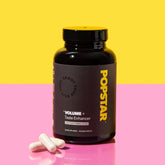Yellow sperm, commonly described as yellowish-looking semen, can raise questions about men’s health and overall well-being. Many factors can influence the color of semen, from dietary choices and hydration levels to potential infections and lifestyle habits. In this comprehensive guide, we will delve into what yellow sperm means, why it may occur, and what steps individuals can take to maintain optimal semen health. This article balances informative, NLP-friendly content with engaging, reader-focused explanations to help you better understand this subject.
Table of Contents
- What Is Yellow Sperm?
- What Causes Yellow Sperm?
- Is Yellow Semen Normal?
- Lifestyle Factors That Affect Semen Color
- Frequently Asked Questions About Yellow Sperm
- Maintaining Optimal Semen Health
- Conclusion
- References
What Is Yellow Sperm?
Yellow sperm refers to semen that appears yellowish in hue rather than the typical whitish-gray color. Semen is a fluid that carries sperm cells, enzymes, proteins, and other substances, assisting in fertility and reproduction. Though variations in color, texture, and smell can occur for numerous reasons, men are sometimes alarmed if they notice a darker or distinct yellow tinge.
It’s important to note that minor color variations do not necessarily indicate a severe health problem. However, a persistent, pronounced yellow color — especially if accompanied by other symptoms — can be a sign worth investigating. While this color change may result from benign causes such as dietary factors or temporary dehydration, it can also suggest more significant issues such as infection or inflammation.
Whether you are experiencing a subtle change or a consistent yellowish cast, exploring common reasons and seeking medical insight when necessary can help ensure you maintain a healthy reproductive system and peace of mind.
What Causes Yellow Sperm?
Semen color can be influenced by many facets of one’s lifestyle and physiology. Here are some primary reasons why you might notice a yellowish tinge:
- Dietary Factors: Consuming foods rich in certain compounds or pigments (like sulfur-containing foods, including onions and garlic) may alter semen color. In many cases, this is temporary and not harmful.
- Dehydration: When the body lacks sufficient fluids, the concentration of waste products in semen can increase, leading to a darker or yellowish appearance. Adequate hydration helps keep bodily fluids, including semen, at their normal consistency and color.
- Urinary Traces: Sometimes, urine left in the urethra can mix with semen during ejaculation, creating a fleeting yellowish or off-white color. This typically is not a cause for alarm unless it becomes a regular occurrence.
- Infections or Inflammation: Inflammatory conditions like prostatitis, epididymitis, or sexually transmitted infections (STIs) can introduce white blood cells or other substances into semen, potentially leading to a yellowish hue. When infection is present, additional symptoms such as pain, discomfort, or an unusual smell might be noted.
- High White Blood Cell Count: Called pyospermia or leukocytospermia, a higher count of white blood cells in semen can give it a yellowish tinge. This condition might revolve around underlying infections or autoimmune responses in the reproductive system.
- Jaundice or Liver Conditions: In rare scenarios, complicated health issues like jaundice can sometimes influence semen color. If you have been diagnosed with liver conditions, any significant changes in bodily fluids may warrant a more thorough examination.
- Medical Treatments or Medications: Certain drugs, including some antibiotics and multivitamins, can alter bodily fluids, causing changes in urine, sweat, and even semen color.
Although many of these causes are benign or brief, some may call for professional evaluation. If you notice continuing changes or other worrisome symptoms (such as pain, burning sensations, or unusual discharge), consider consulting a healthcare provider for a proper diagnosis.
Is Yellow Semen Normal?
On occasion, mild variations in semen color can be entirely normal. Sometimes the yellowish shade is so faint that men do not observe it regularly. In addition, the color of semen can fluctuate over the course of days depending on hydration levels, frequency of ejaculation, or the presence of leftover urine. Infrequent sexual activity may result in darker, more concentrated semen, which might appear yellowish or slightly brownish.
When should you be more concerned? If your semen remains persistently or intensely yellow for more than a week or two, or if you have other symptoms such as pain, tenderness, fevers, or foul-smelling ejaculate, it is recommended to follow up with a healthcare professional. In such cases, a medical evaluation may provide clarity and reassurance, especially when looking for infections or other underlying conditions.
Always remember that many men experience sporadic changes without any long-term health complications. Recognizing habitual variations vs. atypical, sustained changes is key to determining whether you need medical input.
Lifestyle Factors That Affect Semen Color
Certain lifestyle and health habits can contribute to the color of your semen. Being mindful of these aspects may help you pinpoint the root of any noticeable changes:
- Alcohol Consumption: Chronic or excessive alcohol intake can disrupt various bodily processes, including reproductive function, which may lead to color changes or altered semen composition.
- Tobacco Use: Smoking cigarettes or using tobacco products often introduces toxins that can affect overall sperm quality, mobility, and potentially color. Quitting smoking can improve both sperm quality and general health.
- Drug Use: Some recreational drugs might affect hormone balances or lead to inflammation in the reproductive system, resulting in color modifications.
- Nutrition and Diet: A well-rounded diet supports healthy semen, while excessive intake of certain vitamins, minerals, or artificially colored foods might shift coloration.
- Stress Levels: Chronic stress can influence hormone production and immune system function, sometimes impacting semen characteristics.
By examining your diet and daily routines, you might notice patterns that coincide with changes in semen color. A few simple improvements—like drinking more water, moderating alcohol use, or reducing intake of specific foods—could alleviate mild discoloration. Still, if a yellow hue persists, it is recommended to seek physician advice to rule out medical causes.
Frequently Asked Questions About Yellow Sperm
The questions below dive into common inquiries regarding yellowish semen. They aim to address varied concerns and provide clarity on when it might be necessary to consult a healthcare provider.
Does Yellow Semen Indicate an Infection?
While not every instance of yellowish semen is caused by an infection, it can be one sign. Infections like chlamydia, gonorrhea, or prostatitis can introduce white blood cells, yielding a discolored hue. In these cases, additional red flags such as pain, an unusual odor, or urinary discomfort may arise. If you suspect an infection, contacting a healthcare provider is the best next step.
Can Yellowish Semen Be a Sign of Fertility Issues?
Not necessarily. The color of semen alone does not always reflect fertility status. Though certain health conditions can influence sperm production or motility, a single color change often signifies a minor or short-term disruption. Men concerned about fertility should consider semen analysis, which counts sperm concentration, motility, and morphology.
What Should I Do If My Semen Turns Yellow?
It is advised to assess your lifestyle factors first: check your diet, hydration levels, and recent physical changes. If the color persists longer than two weeks or is accompanied by other troubling symptoms (pain, swelling, foul odor, or fever), schedule an evaluation with a healthcare professional. They may conduct a physical exam, complete STI testing, or order a semen analysis.
Can Supplements or Vitamins Affect Semen Color?
Yes. High doses of vitamins or certain mineral supplements can lead to changes in bodily fluids, including urine and semen, resulting in yellowish tints. If you recently started taking a new supplement, you might monitor your semen color over a few weeks to see if it reverts to its typical hue once the body adjusts or if usage is paused.
Should I Worry About Yellow Sperm and Discomfort?
Any combination of itching, painful urination, burning sensations, or swelling around the scrotum in tandem with discolored semen should prompt medical attention. Discomfort suggests a possible infection or inflammatory condition, which could necessitate treatment to alleviate symptoms and protect reproductive health.
Does Age Influence Semen Color?
Age can influence many aspects of reproductive health, including semen volume and quality. While minor color shifts might become more noticeable as men age, it is not a universal rule that older men will consistently have yellow semen. If you experience any new, persistent discoloration, it is always best to check with a healthcare professional.
Are There Home Remedies to Rectify Yellowish Sperm?
Some men find improvement by increasing hydration, moderating alcohol and tobacco use, and adopting a balanced diet. While these steps may help alleviate minor discoloration, it is crucial to rule out any underlying medical conditions first. If you suspect an ongoing health issue, do not rely solely on home remedies.
When Should I See a Doctor About Yellow Semen?
If your semen remains yellow over extended periods (longer than two weeks), or you note discomfort, unusual discharge, or other symptoms of infection (pain during ejaculation, fever, or chills), setting up an appointment with a healthcare provider is recommended.
Can Yellow Sperm Lead to Painful Ejaculation?
Yellow sperm itself does not automatically cause painful ejaculation. However, situations such as an infection or inflammation, which may cause yellowish discoloration, can also lead to painful ejaculation. Addressing the underlying cause — possibly an STI or prostatitis — typically relieves pain and corrects color changes.
Can Sexual Activity Frequency Influence Semen Color?
Men who go longer periods without ejaculating may notice more concentrated semen that can appear yellowish or slightly darker. Conversely, frequent ejaculations may produce lighter, more fluid semen. These shifts are usually benign. However, persistent or sudden changes warrant closer inspection.
Is It Possible to Prevent Yellow Sperm?
Although you cannot always prevent color variations, several strategies may reduce the chance of persistent discoloration: staying well-hydrated, practicing safe sex (to avoid infections), and maintaining a balanced diet. Basic health practices support overall reproductive function and lessen the likelihood of ongoing abnormal changes.
Should I Be Concerned About Semen Smell or Consistency?
Semen often has a characteristic odor that many describe as somewhat chlorinelike. Sudden or unpleasant odors, or a drastic change in consistency (such as clumps or lumps), can point to infection or other underlying concerns. Combined with a yellow tinge, these changes are worthy of professional evaluation.
Does Prostate Health Affect Semen Hue?
Yes. The prostate contributes fluid to semen, and conditions like prostatitis can lead to higher inflammation, white blood cells, or bacterial presence in the ejaculate. Any prostate-related issue can manifest in various symptoms, including changes to semen color, discomfort, or urinary irregularities.
Can Dehydration Impact the Yellowish Tinge in Semen?
Absolutely. Dehydration concentrates bodily fluids, boosting the intensity of pigments and possibly turning semen more yellow. Drinking sufficient water and electrolytes helps maintain normal fluid balance, preventing the appearance of overly yellow or dark semen.
How Is Semen Color Diagnosed or Evaluated by a Doctor?
A medical professional may perform a physical examination and complete tests such as a urinalysis, semen analysis, or blood work. If necessary, they might test for sexually transmitted infections or other conditions. These steps help determine whether an infection, inflammation, or another issue is causing the yellowish hue.
Does Abstinence Cause Yellowish Sperm?
Extended abstinence can sometimes lead to older sperm cells and fluid accumulating, resulting in a more concentrated, slightly yellow or brownish tinge. This change commonly reverts to normal after regular ejaculation resumes, as the body continues producing fresh fluid and sperm cells to replace older ones.
How Can I Maintain Optimal Semen Health?
Key strategies include a balanced diet (rich in fruits, vegetables, and lean proteins), regular exercise, stress management, proper hydration, limited alcohol use, avoidance of tobacco, and consistent, safe sexual activity. Regular medical checkups are especially beneficial if you experience changes in semen color or have ongoing concerns about fertility or anatomical health.
Is Semen Color Linked to Urinary Health?
The urinary tract and reproductive tract share the urethra, so some overlap can occur, especially if residual urine mixes with semen. However, changes in urinary health (for example, an infection or irritation) won't always cause abnormal semen color. Persistent or significant overlap of urinary and semen symptoms should be addressed by a healthcare provider.
What Are the Next Steps If I Notice Pus or Blood in Semen?
If you see pus-like discharge or blood spots (hematospermia) in your ejaculate, it is crucial to speak to a medical professional promptly. Although there are benign explanations for hematospermia, such as small blood vessel ruptures, potential infection or inflammation must be evaluated and, if necessary, treated.
Maintaining Optimal Semen Health
Beyond monitoring color, ensuring overall semen health is critical to fertility, sexual satisfaction, and peace of mind. Below are suggestions aimed at preserving or improving semen quality while potentially reducing color anomalies:
- Nutrient-Dense Diet: Consume foods high in antioxidants (berries, leafy greens) and protein (lean meats, beans). These nutrients can combat oxidative stress in sperm cells.
- Stay Active: Moderate exercise correlates with improved hormonal balance, cardiovascular health, and potentially better sperm function. However, be mindful not to overdo it; excessive training can disrupt hormone levels.
- Manage Stress: Chronic stress can raise cortisol levels, sometimes negatively impacting testosterone and other reproductive hormones. Activities like yoga, meditation, or regular hobbies help combat chronic stress.
- Regular Checkups: Routine medical visits can detect early signs of infections, inflammation, or other underlying issues that might influence semen color and fertility.
- Men’s Health Screenings: Periodic screenings for prostate health, sexually transmitted infections, and hormonal imbalances ensure that any problems are tackled before they worsen.
- Consider Supplements: If your diet lacks certain nutrients, specific supplements (like zinc, selenium, folate) may support sperm health. Consult your healthcare provider before starting any supplement to ensure safety and correct dosing.
Conclusion
Observing yellow-tinted semen can raise questions about health, fertility, and well-being. While many causes — from diet to minor dehydration — can produce a temporary yellow shade, persistent color changes accompanied by discomfort or infection-like symptoms merit professional attention. Caring for your reproductive health through balanced nutrition, stress management, and regular checkups can greatly reduce worries about semen color and support overall sperm quality. By knowing the difference between normal fluctuations and indicators of more serious issues, you can be proactive about safeguarding both your fertility and general health.
References
- National Institutes of Health (NIH). Male Reproductive Health. https://www.nih.gov/
- Mayo Clinic. (2021). Prostatitis. https://www.mayoclinic.org
- Centers for Disease Control and Prevention (CDC). STI Treatment Guidelines. https://www.cdc.gov/
- PubMed. (2020). Semen Analysis in Men. https://pubmed.ncbi.nlm.nih.gov/
Disclaimer: The content in this article is provided for informational purposes only and does not substitute professional medical advice, diagnosis, or treatment. Always seek the advice of a qualified healthcare provider with any questions concerning your health.
































